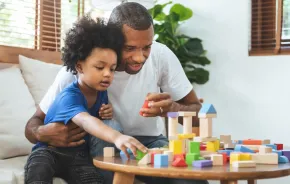 Millions of kids around the country are hitting the fields this week for fall, competing in sports from football to soccer to running. As a parent or concerned adult, you may have signed your district's Concussion Awareness Form, perhaps even watched a safety video. But still, many parents and players are misinformed about the true risks and unfamiliar with the actual signs of concussions. We spoke with Dr. Leah Concannon of UW Medicine's Seattle Sports Concussion Program in order to bring you some facts and dispel some common misunderstandings about concussions or mild traumatic brain injuries.
Millions of kids around the country are hitting the fields this week for fall, competing in sports from football to soccer to running. As a parent or concerned adult, you may have signed your district's Concussion Awareness Form, perhaps even watched a safety video. But still, many parents and players are misinformed about the true risks and unfamiliar with the actual signs of concussions. We spoke with Dr. Leah Concannon of UW Medicine's Seattle Sports Concussion Program in order to bring you some facts and dispel some common misunderstandings about concussions or mild traumatic brain injuries.
Myth 1: Given the right information, parents and/or coaches can diagnose a concussion on the sidelines
The truth: It is not the coach or parent's job to diagnose. The Zachary Lystedt law, signed into law in Washington state in 2009 states that any athlete even suspected of suffering a concussion should be removed from the game or practice immediately. Furthermore, no athlete may return to activity after an apparent head injury or concussion, regardless of how mild it seems or how quickly symptoms clear, without proper medical authorization.
Myth 2: If an athlete hasn't blacked out or lost consciousness, they haven't suffered a concussion
The truth: In only about 10% of concussion cases does the person lose consciousness. Just because a young athlete doesn't black out does not mean that their brain has not been injured. Symptoms may include headaches, a sensation of pressure in the head, dizziness, nausea as well as mood changes, sleep disruption or loss of memory.
Myth 3: If a child suffers a concussion, adults will know immediately
The truth: Symptoms can take minutes, hours even a couple of days to develop. This is why it is so critical for an athlete to be benched until they can be evaluated by a certified trainer or medical professional. Most tragedies due to concussions are often preventable as long as the athlete is not exposed to further head trauma. After a bad first hit, if the child has suffered a concussion then a second hit, even if smaller in force can have catastrophic results such as second-impact syndrome.
Myth 4: Concussions are a boy thing
The truth: Indeed the highest rate of concussion happens to young male football players, followed by boys' ice hockey and lacrosse. But girls' soccer, lacrosse and basketball suffer the next highest rates of concussion, according to a 2012 study published in the American Journal of Sports Medicine.
In fact, in sports where the rules of contact are identical for boys and girls, such as basketball and soccer, girls suffer more concussions than boys per "athletic episode," defined as either one game or one practice. There is no definitive research explaining why this is.
Myth 5: The right helmet or other equipment can prevent concussions
The truth: While some individuals and companies have made claims about safer helmets or helmet liners, "there is no such thing as a helmet that prevents concussions," says Concannon. Helmets were introduced to the game of football in the late 19th and early 20th centuries as a way to reduce deadly skull fractures. Helmets, while now made of plastic (polycarbonate) rather than leather still do not offer protection as the brain slamming into the hard bones of the skull. Dr. James Andrews, author of Any Given Monday and a leader in youth sports injury prevention efforts, compares mild traumatic brain injury to shaking Jello inside a Tupperware container.
Myth 6: As a student recovers from a concussion, it's OK for them to rest by watching TV, playing video games and taking tests at school
The truth: Dr. Concannon says "relative mental rest" is critical to a person's recovery from a concussion. Because the brain injury causes reduced blood flow to the brain, mental stress can slow a patient's recovery. The concussed athlete may attend school if they are able, but Concannon sends patients with a letter for their schools requesting flexibility in the student's school workload.
For more information:
Concussion fact sheet for parents
Concussion fact sheet for students
 ParentMap TV Editor Hilary Benson blogs about the prevalence and prevention of youth sports injuries at www.playitsafesports.com.
ParentMap TV Editor Hilary Benson blogs about the prevalence and prevention of youth sports injuries at www.playitsafesports.com.











